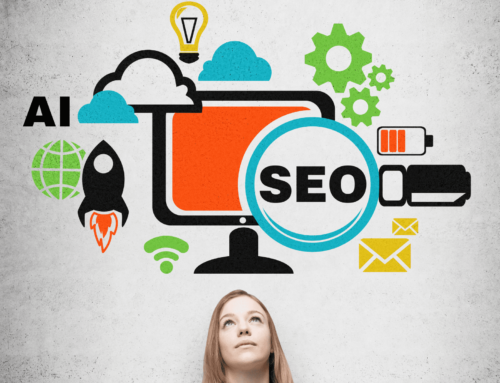Do you send emails and wonder if anyone’s reading them? Do you know who gets your emails? Consider how you manage your email subscriber list.
Did you know you can improve your nonprofit’s email open rates through more effective use of your subscriber list? How you build, maintain, and apply your list forms the foundation for your email marketing success. Any email campaign is only as good as its list.
Emails for Nonprofits
Most nonprofits use emails to engage supporters, request donations, encourage volunteering, promote events, and share news. Email reaches your audience when you want to communicate with them. Your messages go directly into their inboxes.
Well, ideally the messages get into their inboxes. For nonprofits, on average, approximately 11% of all emails are not delivered, according to the National Council of Nonprofits. Bad addresses caused by typos and other issues, bounce rates, blocked servers, full inboxes, and vacation and auto-replies are among the many factors which cause undelivered emails.
Better Email List Top 10 Tips
Email lists are important in the success of any email campaign. Get things going the right way to leverage the power of your email list. The results can have an immediate impact on the bottom line for your nonprofit. Here are a few things to keep in mind:
- Create an email marketing plan which includes implementing email list best practices.
- Understand an email list’s value.
- Improve the quality of your email list.
- Build email lists the right way from the beginning.
- Require an opt-in acknowledgment from new subscribers.
- Send a welcome email to thank new subscribers.
- Maintain email lists with an annual check-up and other clean-up measures.
- Use segmentation to do more targeted sends.
- Provide useful content to your subscribers.
- Keep the routine going. Learn to love working with your email list!
Value of Email Lists
Email marketing is a vital component of your overall marketing strategy. The potential gains are significant, especially when compared to other marketing initiatives. The return on investment (ROI) can be several times higher, but this only comes after careful strategic planning.
With an email marketing plan, you can identify strategic goals for your campaigns and implement tactics to achieve them. Analytics calculated after each email campaign supply insights which can be used to improve the deliverability and quality of interactions.
Sending an appropriate message to the correct inbox increases engagement and builds relationships. Subscriber list quality is a key component.
Subscriber List Quality
The quality of the subscriber list has a direct impact on the deliverability rate. Start a deliberate process to build, maintain and deploy your email subscriber list. You can take measures to reduce the number of undeliverable emails and the number of unsubscribes.
How to Build Email Lists
Hopefully, you already have an email list. If not, now’s the time to start building one. Don’t delay. An email subscriber list is an important asset for your nonprofit. A proper email list supplies an open gateway to your supporters, volunteers, board members, and customers.
As new subscribers are added, get their full names, addresses, phone numbers, and ways they’re involved with your nonprofit. Set up special fields to capture unique attributes, such as job titles, ages, birthdays, anniversaries, event roles, donation amounts and dates, and more. The information collected can be used for more targeted (segmented) email campaigns.
Go back through the data history to find out when the list was started. It’s worth noting how email addresses get on your list in the first place. The method used to acquire email addresses determines how engaged subscribers will be. Get the right people on your email list from the start.
Never purchase email addresses. Paid lists are more damaging than helpful for your email marketing goals. At first, your list will increase in size, but before long it will decrease. Almost certainly, paid subscribers will drop off your list after a campaign or two. Their emails will probably end up in the SPAM folder and could hurt your sender reputation. Loyalty is not purchased, it’s earned.
Opt-In New Subscribers
The old saying “it never hurts to ask” applies to people interested in being on your email list. Don’t just sign-up new subscribers, have them opt-in to join first.
The best practice is to require an opt-in, or confirmed opt-in as it is sometimes called. First potential subscribers fill out fields to give you their email addresses. After that information is submitted, an email is sent back to the address the potential subscriber supplied. They must open that auto-send email and click a link to confirm their interest before they are actually added to the list.
The confirmation process flags bad addresses before they have a chance to be placed on your list. Additionally, an opt-in ensures the person really wants to receive your nonprofit’s emails.
Welcome Email Auto-Sends
Thank new email subscribers. A day or two after new subscribers opt-in and join your list, send them special welcome emails. This is the time to build and nurture relationships with new subscribers. Give them more information about your nonprofit and how they can get involved with the important work you do. As a bonus, consider including a video, exclusive map, cherished recipe, or some other item aligned with your nonprofit that the recipient would like to have.
An auto-send function can trigger this. Constant Contact, MailChimp, Vertical Response, and other recognized email marketing service providers should have tutorials or templates available. These can guide you through the process of setting up welcome emails as auto-sends. It’s imperative that you use a recognized email marketing service provider to handle your emails.
Maintaining Email Lists
Do you know how long it’s been since your subscribers interacted with your nonprofit? Campaign analytics can show which email addresses have gone a year or more without any interaction.
These inactive accounts are a problem. You can either try to reengage them with a special email campaign or remove them from the list. If you decide to remove them, don’t permanently delete the record. There is a chance the subscriber could reengage with your nonprofit in the future. Retaining old data can help frame a history of how the subscriber interacted with your organization in the past. Again, look to your email marketing service provider for the resources you need to manage your contacts and lists.
List Clean-Up Time
Take a fresh look at your old email subscriber list. During the last year, have you gone over your email list? Your email list needs an annual checkup.
Compare the number of subscribers you have now to a year ago. The number of subscribers will change over time. Look for trends. Are more people opting out or joining your list?
If a subscriber has gone a year or more without opening any emails, inactivate or archive the email address. The best practice is to set up an automatic send email to ask if they want to be removed or if they still want to receive emails. Never completely delete the address, just inactivate or archive so you can retrieve data if you need to have it in the future.
Providing Value to Your Subscribers
Email offers direct communication to your audience. You need to know who your audience is and what they want from your nonprofit. If your emails provide subscribers value, they will be more engaged. This leads to higher open rates and conversion rates (getting the email recipient to take the action you want). If your email list is up-to-date and contains only people with a genuine interest in your nonprofit, your open rates will be higher.
Always provide your subscribers with something valuable which will make them look forward to your next email. Focus on subscriber needs starting with the subject line and working your way into the body of the email. Put this formula into action: For every few mentions about your nonprofit, mention something about the subscriber. A quick and effective way to do this is to use the words “you” and “your”.
Avoid using the word “we”. Tie the word “we” into something more tangible about your organization, such as its real name, actual staff members, or board members. Tell descriptive stories about what your nonprofit does every day to achieve its mission and realize its vision. Create a clear picture of what your nonprofit does. Videos can be highly engaging.
Segmenting Email Lists
Want to boost the effectiveness of your email campaigns? Use segmentation to pare down a big list into smaller more related groups. Segmented email campaigns have a much higher ROI than their “email-blast-to-the-whole-list” counterparts.
Every nonprofit is unique and will have different audiences. Segmentations reflect the distinct characteristics of smaller groups within the organization. A few examples of what criteria could be used to segment a list include:
- Prior event attendees: Thank them for attending past events, or tell them about future events.
- Past donors: Thank them for their generous support, and encourage more donations.
- Retention efforts: Has it been a couple of months since you’ve heard anything from subscribers? Try to win them back.
- Website activity: Follow-up on the preferences they show as they browse on your website. Did they visit your volunteer page, donation page, events page, etc?
- Volunteer participation: Thank them for volunteering. Update those who give their time to your nonprofit. Let them know about new volunteer opportunities.
While segmentations have a learning curve, the results of more targeted campaigns will be worth your time. The recipient of your email is more likely to take action if the message appeals to their unique preferences for information.
Email List Improvement Next Steps
Emails can be a nonprofit’s best friend. Work with your email list, and leverage it to do more to achieve your marketing goals. Better email lists fuel better email campaigns.
Feeling overwhelmed about emails and email lists? Your email marketing service provider will have tips and tricks on how to leverage email lists. Some offer templates or walk-through steps for opt-ins, welcome letters, and segmentations. Once parameters are set up you can clone them again and again for new campaigns.
Also, consider getting an email marketer to help. This could be a form of capacity building for your nonprofit’s future growth. If you don’t have a staff member with that expertise, find someone with a genuine interest in learning or tap into your board or volunteers. If your budget permits, hire an email marketing consultant to get you going.
In any case, have a marketing plan which includes email campaigns. Recognize the value of your email list and take steps to improve its quality. From the start, use best practices to build your list. Before a new subscriber is added to your list, require an opt-in. A day or two after a new subscriber is added, thank them with a welcome email. Conduct an annual check-up as part of your list maintenance routine. Target subsets of your list in segmented sends. Put yourself in the subscriber’s shoes, and always give them content they want to receive.
Have a routine for your email lists, and have fun with your email marketing. Your subscribers will look forward to your next send.
By Lee Ann Owens





